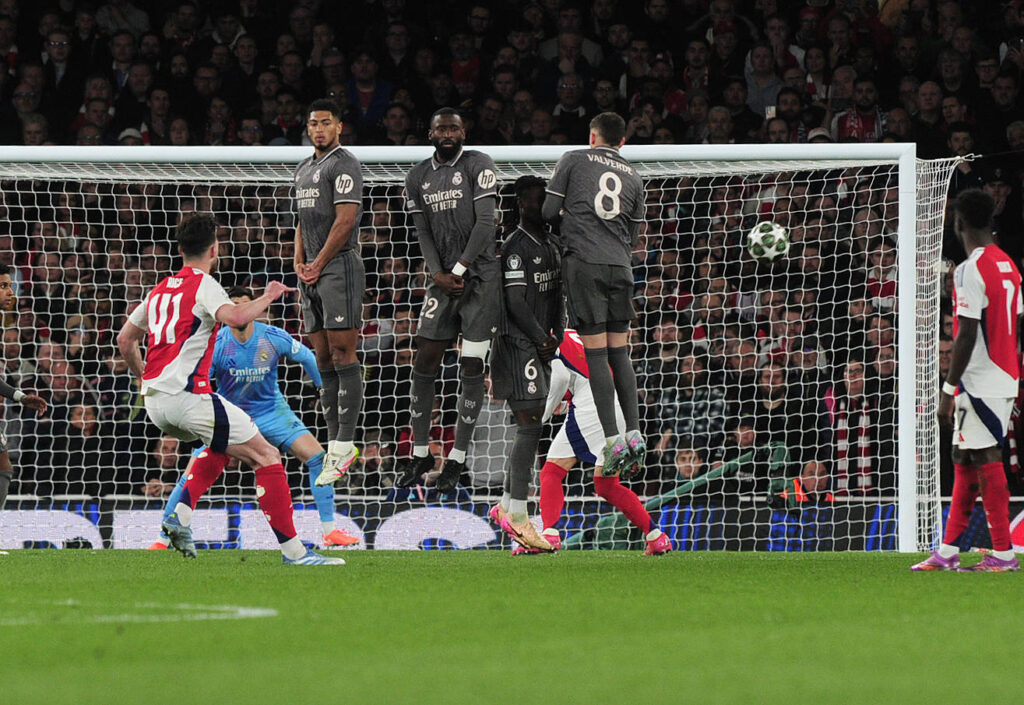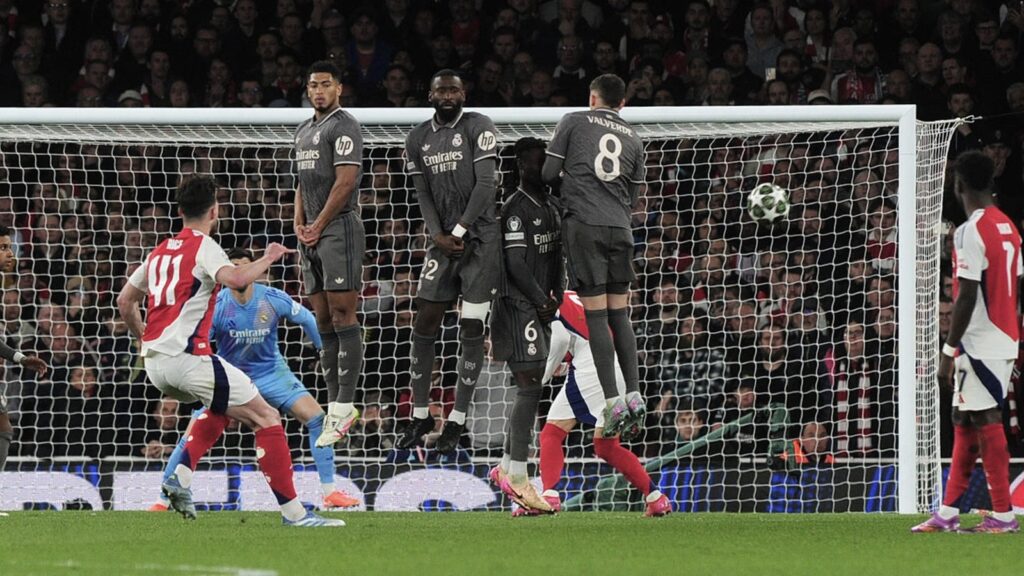Football is a game of fine margins. Teams work round the clock to find every small detail which can give them an advantage over their opponents. Perhaps one of the most underrated methods of scoring goals in football is through corners and free-kicks, collectively known as ‘dead-ball’ situations.
In modern-day football, more than 25% of goals come from corners and free-kicks. There are different variations in how teams prepare routines for set-pieces. Top clubs in the world have dedicated set-piece coaches. Their job is to make sure a team can make the most of every corner and free-kick they get during the game.
Last season, Crystal Palace, Nottingham Forest and Arsenal all scored 17 goals from set-pieces, excluding penalties, in the Premier League. Aston Villa scored 16, followed by Brighton (15) and Everton (15). No wonder teams like Liverpool and Manchester City are not topping these stats, as they score much more of their goals from open play.

This highlights how much smaller clubs rely on set-pieces, especially when they face off against a team that can dominate possession. In this article, we will break down the different strategies and tactics teams use during dead-ball situations.
We will dive into some stats that show how much set-piece takers contribute to a team’s success. We will also highlight some teams that have used dead-ball situations to carve out an advantage over opposition teams.
What are dead-ball situations?
Dead-ball situations like corners and free-kicks are basically a phase of play wherein the game resumes after a short break. A corner, for example, is an excellent opportunity to score a goal as multiple players from a team are present in the opposition box.
In modern-day football, there is a lot of emphasis on attractive, possession-based football. However, one way a smaller club can hurt a bigger team with star players is through dead-ball situations.
Teams that have taller, more physical players can use that as an advantage to score a goal through a corner. Similarly, technically gifted players can dictate the outcome of a match through a single free-kick.

- Goals from set-pieces
Teams often look to score goals from corners or through direct free-kicks. Scoring a goal through a direct free-kick is relatively easier than scoring directly from a corner. However, there have been instances where players have scored goals directly from a corner kick. It’s called an ‘Olimpico goal’.
For corners, teams will flood the opposition box with multiple players who can then try to score either through a direct header or through a layoff. Certain teams tend to take corners through two players. Player A will pass the ball to player B, who will then deliver a cross inside the box.
- Assists from set-pieces
Set-pieces don’t always result in goals; they can be used as an assist as well. When a team takes a short corner to try and find a player near the opposition’s box, this will be registered as an assist.
Free-kicks can also be used to deliver the ball into the opposition’s box. Usually, when a free-kick is awarded too far away from the goal, a team will try to deliver the ball into the box for players to try and score through headers.

- Shots from set-pieces
This happens when a team tries to take a shot directly at the opposition’s goal from a set-piece. For example, when a team earns a direct free-kick, they will try and score the goal directly from the set-piece.
Often, teams will try to take short free-kicks to try and find a second player who will attempt a shot at goal. This is done to avoid the ball getting blocked by the wall and catch the opposition goalie by surprise.
- Accurate crosses
The accuracy of the crosses being delivered into the box will decide how often a goal is scored. Cross accuracy is a metric to study how accurately a player finds his teammate when he crosses the ball.
Usually, the player designated to take corners is the most potent crosser. Their role is to deliver accurate crosses into the box, either from corners or from indirect free-kicks.
Cross accuracy is usually calculated using a basic formula:
Cross accuracy (%) = (Successful crosses ÷ Total crosses) × 100
This shows the percentage of crosses that successfully reach a teammate.
- Key Passes
Key passes often refer to a pass that more often results in a clear goal-scoring opportunity. A key pass can be a move which unlocks the opposition’s defence, regardless of the shot’s outcome.
For example, when a midfielder plays a through ball, surpassing the opposition defence, it can be considered a key pass. Key passes are tracked to measure the creativity and playmaking abilities of a player. Teams use this metric to identify the creativity of midfielders or forwards.
Often, defenders will analyse opposition attackers’ creative players to prepare for how to defend against them.

- Goals from direct free-kicks
Scoring goals from direct free-kicks is a sign of a player’s technical ability and vision. Sometimes players score goals by curling the ball over the wall. Sometimes, players tend to curl the ball under the wall, when the opposition defenders jump to block the free-kick.
Free-kick goals are very pleasing to watch but difficult to execute. Even the world’s best players find it difficult to score free-kicks every game. There are multiple factors at play here, like distance from the goal, angle of the free-kick and many more.
Set-pieces redefining the modern-day game
In modern-day football, teams are utilising set-pieces in a revolutionary way. Coaches experiment with different marking systems to get even the slightest advantage during dead-ball situations.
Free-kicks and corners were often under-utilised in the past, but these days they result in a high volume of goals. If executed perfectly, set-piece routines can drastically improve a team’s chances of scoring goals.
